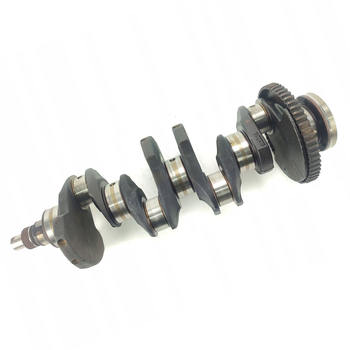The Intriguing World of Crankshaft Geometry
Have you ever wondered how a car engine manages to run so smoothly, even when it's working at high speeds? The secret lies in the crankshaft, a vital component that converts the linear motion of the pistons into rotational motion. But it's not just any crankshaft that can do the job – it's all about the geometry.
The Role of Crankshaft Geometry in Engine Balance
Crankshaft geometry plays a crucial role in maintaining engine balance. In simple terms, engine balance refers to the distribution of weight within the engine, ensuring that no single point becomes too heavy and causes excessive vibrations. By carefully designing the crankshaft's shape, size, and counterweights, engineers can create a more balanced engine that operates more efficiently and smoothly.
Understanding the Different Types of Crankshaft Designs
There are three main types of crankshaft designs: flat-plane, cross-plane, and counter-rotating. Each design has its unique benefits and drawbacks when it comes to engine balance and smoothness.
Flat-Plane Crankshafts
Flat-plane crankshafts are commonly found in high-performance engines due to their lightweight design and ability to achieve high RPMs. However, they are inherently less balanced than other designs, which can lead to increased vibrations.
Cross-Plane Crankshafts
Cross-plane crankshafts, on the other hand, offer superior engine balance thanks to their offset crank pins and larger counterweights. This design results in smoother operation, making it a popular choice for many passenger vehicles.
Counter-Rotating Crankshafts
Lastly, counter-rotating crankshafts provide exceptional balance by having two crankshafts that rotate in opposite directions. This design significantly reduces engine vibrations and provides a more stable platform for the engine's internals. However, it's a more complex and costly solution, typically reserved for high-end performance vehicles.
Practical Applications: How to Improve Engine Balance and Smoothness
So, how can you apply this knowledge to improve your engine's performance? Here are a few actionable tips:
In Conclusion: The Power of Crankshaft Geometry
As it turns out, the seemingly simple crankshaft is a marvel of engineering that plays a significant role in your engine's balance and smoothness. By understanding the intricacies of crankshaft geometry and how it affects engine performance, you'll be better equipped to make informed decisions about your vehicle's maintenance and upgrades.
So, the next time you're behind the wheel, take a moment to appreciate the humble crankshaft and its critical role in making your driving experience as smooth as possible.




